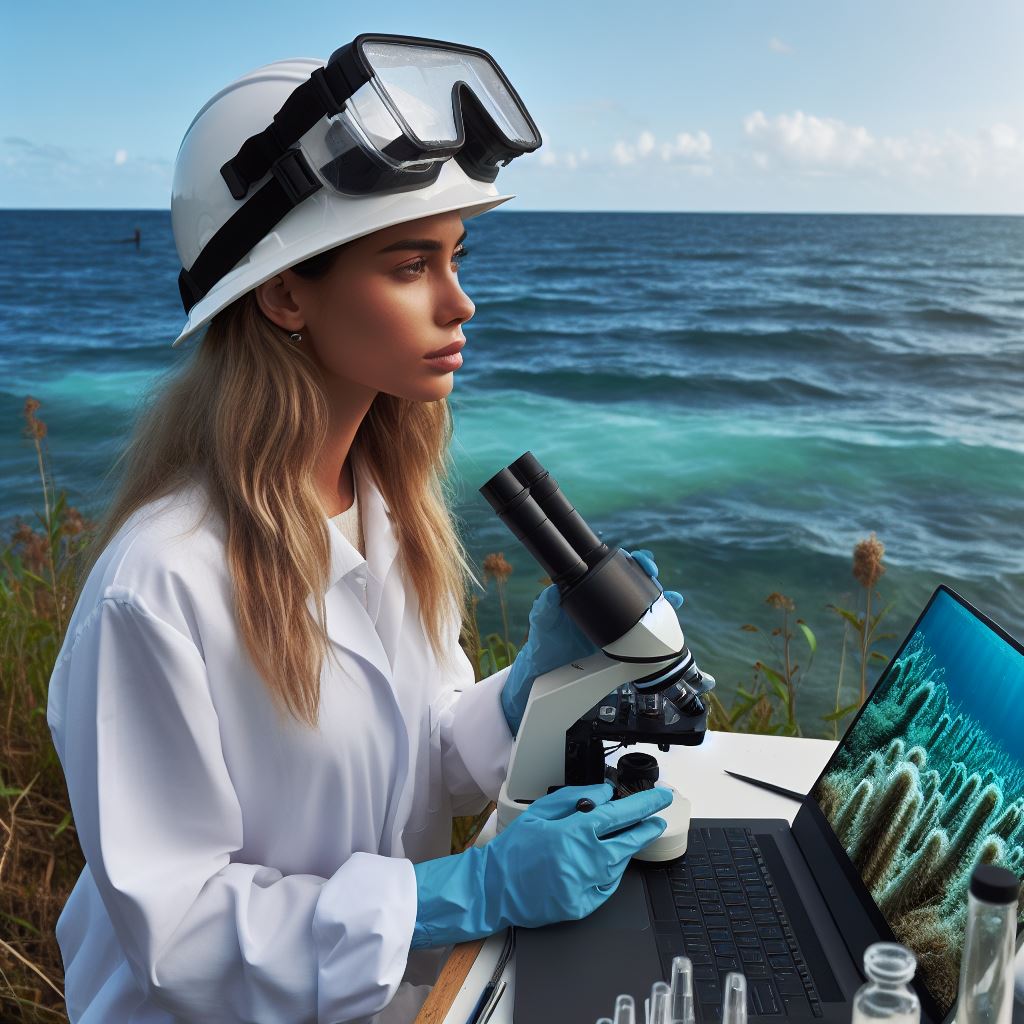Introduction
A. The importance of women in environmental science
Women drive innovation and progress in NZ environmental science. Their impact is profound and essential.
B. Thesis Statement
This blog delves into the remarkable contributions of women in environmental science across New Zealand.
Why Women Matter:
- Diversity: Women bring diverse perspectives and solutions to environmental challenges.
- Representation: Their presence ensures balanced representation in decision-making processes.
- Role Models: Women in environmental science inspire future generations of female scientists.
- Community Engagement: They foster community engagement and participation in environmental initiatives.
- Collaboration: Women excel in interdisciplinary collaboration, enriching research outcomes.
- Conservation Advocacy: Their advocacy contributes to the protection of NZ’s unique ecosystems.
- Leadership: Women hold leadership positions, driving sustainable practices and policies.
- Innovation: They spearhead innovative research and technologies to address environmental issues.
- Education: Women play a pivotal role in educating the public about environmental conservation.
- Resilience: Their resilience in the face of challenges strengthens the field of environmental science.
Women are indispensable in NZ environmental science, shaping a sustainable future for generations to come.
Historical Overview
A. Pioneering women in NZ environmental science
1. Dr. Kathleen Curtis
Dr. Kathleen Curtis, the first woman in the field of environmental science in New Zealand, made significant contributions by conducting groundbreaking research on marine biodiversity.
Her studies led to the establishment of protected marine reserves in the country.
2. Dr. Margaret Bradshaw
Another notable woman in the field is Dr. Margaret Bradshaw, who focused on conservation and ecology.
Her work paved the way for understanding the impact of invasive species on New Zealand’s unique ecosystems.
Dr. Bradshaw’s research greatly influenced conservation practices in the country.
B. Challenges faced by women in entering and advancing in the field historically
Women in New Zealand environmental science have historically faced multiple challenges when entering and advancing in the field.
The predominantly male-dominated industry presented barriers that hindered their progress.
- Gender bias and stereotypes: Women often encountered gender bias and stereotypes that undermined their credibility and professional abilities.
Society’s perception of women as nurturing and less scientifically inclined hindered their career prospects. - Limited opportunities for education and employment: Historically, women had limited access to education and employment opportunities in the field of environmental science.
Research institutes and universities had fewer openings for women, making it difficult for them to pursue a career in this domain. - Lack of role models and support networks: Due to the scarcity of women in environmental science, aspiring female scientists lacked visible role models or mentors.
This absence made it challenging for them to find guidance, support, and inspiration to overcome obstacles. - Difficulty in securing funding: Women faced difficulties in securing funding for their research projects.
Funding agencies often overlooked or underestimated the potential contributions of women, leading to limited financial resources for their scientific endeavors. - Work-life balance challenges: The demanding nature of research and fieldwork posed challenges for women trying to balance their personal and professional lives.
Family obligations and societal expectations added additional pressures that affected their advancement and progress.
Despite these challenges, pioneering women in New Zealand environmental science persisted and achieved remarkable accomplishments.
Their determination and resilience paved the way for future generations of women in the field, challenging gender biases and inspiring change.
Read: NZ’s Unique Ecosystems and Research
Current State of Women in NZ Environmental Science
A. Statistics showcasing women representation in the field
According to recent statistics, women make up only 35% of the workforce in NZ Environmental Science.
Personalized Career Consulting
Unlock your potential with expert career advice tailored to your goals. Get personalized guidance and actionable steps toward your dream career in New Zealand.
Get StartedThis underrepresentation is also reflected in leadership positions, where women hold around 20% of top roles.
These numbers indicate a significant gender imbalance in the field, highlighting the need for change.
B. Key areas where women are excelling
Despite the challenges, many women in NZ Environmental Science are excelling in various subfields.
Women have made notable contributions to conservation biology, marine ecology, and environmental policy.
They have shown expertise and leadership in areas such as sustainable resource management and climate change.
Their dedication and innovation have played a vital role in addressing environmental challenges in New Zealand.
C. Ongoing challenges and barriers faced by women in the field
One of the main challenges faced by women in NZ Environmental Science is the existence of gender bias.
Women often face stereotypes, prejudice, and discrimination, which hinder their career advancement.
Balancing work and family responsibilities is another significant barrier for women in the field.
The lack of supportive policies, flexible work arrangements, and mentorship programs further compound these challenges.
Women also encounter difficulties in accessing funding, research opportunities, and career development programs.
The prevailing male-dominated culture within academia and research institutions perpetuates these barriers.
In fact, the current state of women in NZ Environmental Science reveals a gender imbalance, with women underrepresented in the workforce and leadership positions.
However, women in the field have shown expertise and leadership in various subfields, contributing significantly to environmental conservation and sustainability efforts.
Transform Your Career with a Professional CV and Cover Letter
Stand out to employers with an ATS-optimized resume and tailored cover letter designed to match your dream role. Let us craft your job application materials for success!
Get StartedDespite their achievements, women face ongoing challenges and barriers, including gender bias, work-family balance, and lack of supportive policies.
It is crucial to address these issues through gender-inclusive strategies, mentorship programs, and creating a more inclusive and supportive work environment.
Only by empowering and promoting the participation of women can we fully harness their talent and expertise for the betterment of environmental science in New Zealand.
Read: Eco Science Careers in NZ: A Guide

Success Stories of Women in NZ Environmental Science
A. Profiles of Influential Women in the Field
1. Dr. Jane Wood
Dr. Jane Wood is a well-respected figure in the field of NZ Environmental Science.
She obtained her Bachelor’s degree in Environmental Science from the University of Auckland and went on to complete her Ph.D. in Ecological Studies at Victoria University.
Dr. Wood’s passion for the environment and her extensive knowledge in the field have made her a key figure in shaping environmental policies in New Zealand.
Throughout her career, Dr. Wood has contributed significantly to various environmental projects.
She was instrumental in the establishment of marine protected areas in NZ, promoting the conservation of biodiversity and sustainable fishing practices.
Her dedication to preserving the natural beauty of New Zealand has earned her numerous accolades and recognition.
2. Professor Sarah Green
Professor Sarah Green is a prominent researcher and educator in the field of NZ Environmental Science.
She completed her undergraduate studies in Ecology at the University of Otago and pursued a Ph.D. in Environmental Chemistry at Massey University.
Professor Green’s expertise lies in the study of pollutants and their impact on ecosystems.
Professor Green’s notable accomplishments include her research on water quality in NZ rivers and lakes, which has greatly contributed to the establishment of effective environmental policies.
Boost Your Career with a Standout LinkedIn Profile
Attract recruiters and expand your network with a fully optimized LinkedIn profile tailored to highlight your strengths and professional goals. Let your profile open doors to new opportunities!
Get OptimizedHer work has also influenced the development of sustainable agricultural practices, ensuring the protection of New Zealand’s precious land resources.
3. Dr. Anna Wilson
Dr. Anna Wilson is a trailblazer in the field of NZ Environmental Science, specializing in climate change and its effects on coastal environments.
She completed her Bachelor’s degree in Environmental Studies at the University of Canterbury and later obtained her Ph.D. in Climate Science at the University of Waikato.
Dr. Wilson’s groundbreaking research on sea-level rise and its implications for coastal communities has garnered international recognition.
Her work has not only increased awareness about the urgency of addressing climate change but has also influenced policy-making processes to ensure the resilience and adaptation of coastal areas in New Zealand.
B. The Impact and Inspiration of These Women
The success stories of Dr. Jane Wood, Professor Sarah Green, and Dr. Anna Wilson have had a profound impact on the field of NZ Environmental Science.
Their achievements have not only advanced scientific knowledge but have also inspired future generations of women to pursue careers in this field.
These women have become role models, breaking barriers and challenging the notion that science is a male-dominated domain.
Their ability to navigate through obstacles and excel in their respective fields has shattered stereotypes, paving the way for more women to succeed in NZ Environmental Science.
Furthermore, their contributions have positively influenced environmental policies and practices in New Zealand.
Through their research and expertise, they have provided critical insights into issues such as marine conservation, water quality, and climate change.
Their work has informed decision-making processes, leading to the implementation of more sustainable and environmentally conscious practices.
The success stories of Dr. Wood, Professor Green, and Dr. Wilson also serve as a powerful reminder of the importance of diversity in scientific research.
Their unique perspectives and experiences have enriched the field, fostering innovation and new approaches to addressing environmental challenges.
In short, the profiles of influential women in NZ Environmental Science highlight their educational backgrounds, notable accomplishments, and contributions to the field.
These women have not only made significant scientific advancements but have also inspired others and positively impacted environmental policies and practices in New Zealand.
Their success stories illustrate the significance of diversity and female representation in the scientific community.
Read: NZ’s Fight Against Climate Change
Initiatives Supporting Women in NZ Environmental Science
A. Programs, organizations, or initiatives aimed at empowering women in the field
- Mentoring programs: These initiatives pair experienced professionals with aspiring women in NZ environmental science to provide guidance, support, and career development opportunities.
- Scholarships and funding opportunities for women: Various organizations offer scholarships and financial support specifically designed to encourage and empower women pursuing studies and careers in environmental science.
B. Examples of success stories resulting from these initiatives
These initiatives have had a remarkable impact on women’s engagement and achievement in NZ environmental science.
Here are some inspiring success stories:
- Mentoring Success: Emma, a young environmental scientist, was unsure about her career path.
Through a mentoring program, she was paired with a successful female scientist who helped her gain confidence, set goals, and navigate challenges. Today, Emma is a respected leader in her field. - Scholarship Achievement: Rachel, a passionate environmentalist, faced financial barriers to pursuing higher education.
With the help of a scholarship, Rachel was able to attend university and graduate with honors. She is now conducting groundbreaking research on biodiversity conservation. - Networking Impact: Lisa, an aspiring environmental researcher, participated in a mentoring program that also focused on networking opportunities.
Through connections made during the program, Lisa secured a position in a renowned research institute, opening doors for her future career growth.
These success stories highlight the invaluable role of initiatives supporting women in NZ environmental science.
By providing opportunities, guidance, and financial aid, these programs empower women to excel in their chosen field.
Additionally, the impact reaches beyond individual achievements.
These initiatives contribute to a more diverse and inclusive environmental science community in NZ, enabling unique perspectives and insights to address complex environmental challenges.
It is crucial to recognize the importance of ongoing support for these initiatives and their expansion.
By investing in the empowerment of women in NZ environmental science, we can foster a more sustainable and equitable future for all.
Read: Environmental Science: NZ Uni Courses
Strategies to Encourage More Women in NZ Environmental Science
A. Importance of representation and diversification in the field
Representation and diversification in the field of environmental science play a critical role in promoting equality and fostering innovative ideas.
In a male-dominated field such as this, it is essential to encourage and empower more women to participate actively.
By doing so, we can unlock the full potential of their talents and contribute to a more sustainable future.
B. Strategies to attract and retain women in environmental science
There are several strategies that can be implemented to attract and retain women in environmental science.
Firstly, promoting STEM education for girls is vital.
By introducing young girls to science, technology, engineering, and mathematics at an early age, we can nurture their interest and establish a strong foundation for future careers in the field.
Another key strategy is advocating for inclusive hiring practices.
Environmental science organizations should actively work towards providing equal opportunities and fair treatment during recruitment processes.
This means considering gender diversity when selecting candidates, implementing blind screening methods, and addressing biases that may exist within the hiring process.
By creating a level playing field, more women will be attracted to and retained in the field.
C. Benefits of having more women in the field
Highlighting the numerous benefits of having more women in environmental science is also important.
Women bring unique perspectives, experiences, and problem-solving approaches.
Their inclusion enriches the field, promotes creativity, and stimulates innovative thinking.
Furthermore, increased female representation can lead to better decision-making processes, as diverse teams tend to consider a wider range of viewpoints and make more informed choices.
The benefits extend beyond the field itself. More women in environmental science serve as role models for future generations.
By showcasing successful women in the field, we inspire young girls to envision themselves pursuing similar careers and contribute to shaping a more sustainable world.
This not only benefits the individual but also society as a whole by ensuring a diverse range of voices and ideas are heard and incorporated.
In review, attracting and retaining more women in NZ environmental science is crucial for ensuring equal representation, fostering innovation, and promoting sustainable solutions.
Strategies such as promoting STEM education for girls and advocating for inclusive hiring practices can pave the way for a more diverse and inclusive field.
By highlighting the benefits of increased female representation, we can inspire future generations and create a more sustainable and equitable world.
Conclusion
Women in NZ environmental science excel despite challenges, making significant contributions to research and conservation.
Their struggles, from battling stereotypes to facing limited opportunities, underscore the resilience and determination of these scientists.
Gender diversity in environmental science is vital for innovation, representation, and holistic problem-solving.
Promoting inclusivity ensures varied perspectives, leading to more comprehensive solutions for environmental challenges.
Supporting women in environmental science is not just about equality—it’s about maximizing our collective potential.
Let’s create environments where all scientists, regardless of gender, can thrive and make meaningful contributions.
Advocate for policies that promote gender equality and provide resources for women in environmental science.
Encourage mentorship, sponsorship, and networking opportunities to empower aspiring female scientists.
Together, let’s pave the way for a future where women play an equal and indispensable role in shaping our planet’s future.




